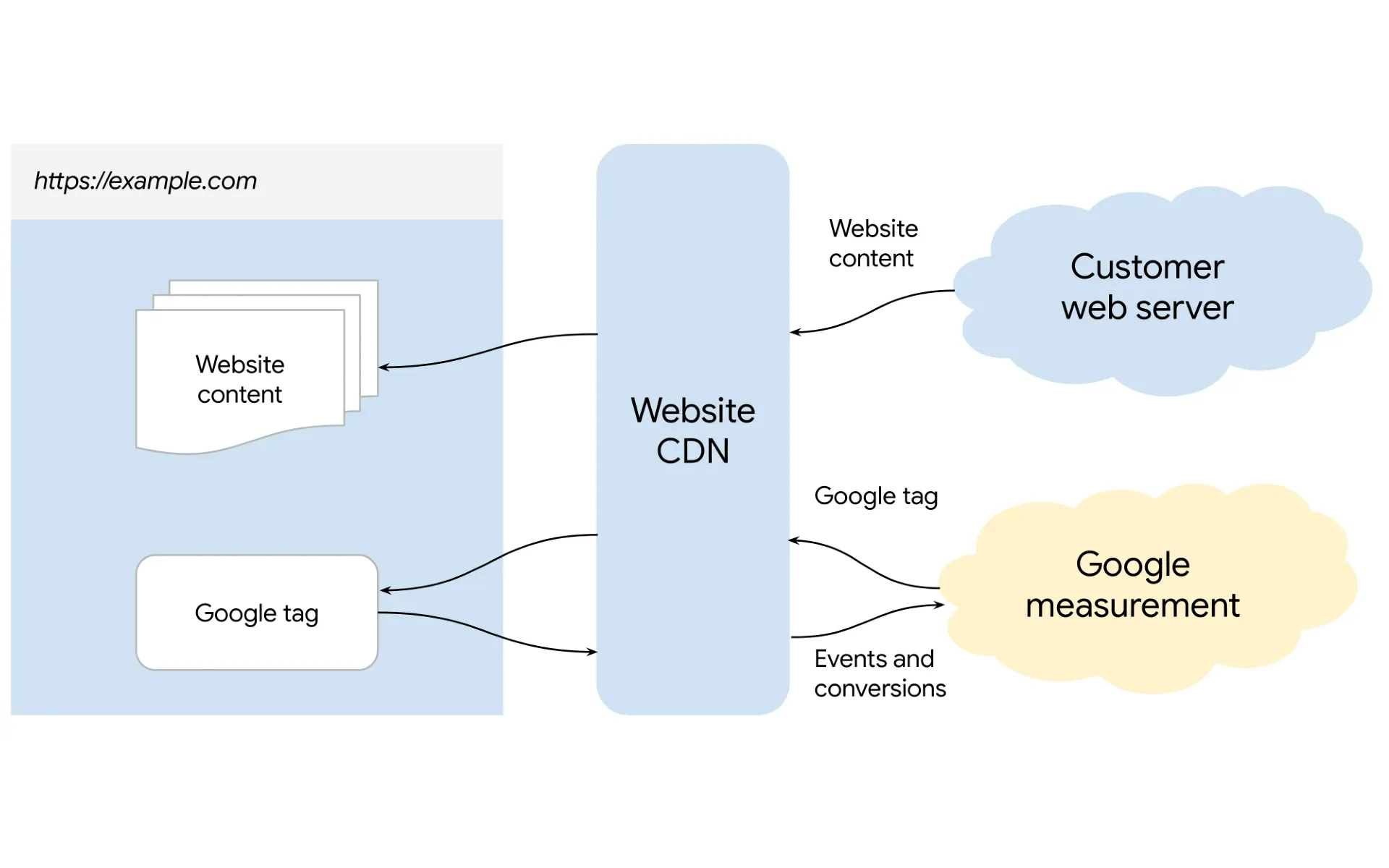Google Tag Manager debuts First-party Mode Beta with Cloudflare Integration
New feature promises improved measurement signals and data durability through first-party infrastructure integration with Cloudflare.

Google has unveiled a significant update to its Tag Manager platform, introducing a beta version of First-party mode. This new feature, announced on October 9, 2024, aims to enhance data collection capabilities for website owners and marketers. The update comes as part of Google's ongoing efforts to improve measurement accuracy and adapt to evolving privacy regulations.
First-party mode allows website owners to deploy Google tags using their own first-party infrastructure, hosted on their website's domain. This setup creates an intermediary layer between the website and Google's services, potentially leading to more robust data collection.
According to Google's documentation, the standard Google tag setup involves requesting tags from a Google domain. In contrast, First-party mode loads the Google tag from the website's own domain. When the tag fires, it sends measurement requests to the first-party domain, which then forwards them to the relevant Google product.
Key benefits of first-party mode
The introduction of First-party mode brings several potential advantages:
- Improved measurement signals: Google suggests that this setup may result in better quality data collection.
- Enhanced durability: The first-party infrastructure could provide a more resilient tag configuration.
- Greater control: Website owners have more oversight of the data collection process.
Technical implementation
Google offers two methods for implementing First-party mode:
- Manual setup: This option requires configuration of a Content Delivery Network (CDN) or load balancer to forward requests to external endpoints.
- Automated setup with Cloudflare: Currently in closed beta, this method simplifies the implementation process for Cloudflare users.
The automated Cloudflare integration involves the following steps:
- Accessing First-party mode settings in the Google tag interface
- Choosing a measurement path
- Signing in with Cloudflare and granting necessary permissions
- Enabling First-party mode for selected Cloudflare zones
Impact on existing setups
Website owners should be aware that implementing First-party mode may affect how tags interact with on-page code. Google advises:
- Reviewing and potentially updating consent and personalization settings
- Ensuring compatibility with existing consent management platforms
- Configuring default consent states within Google tags or Tag Manager containers
As of October 2024, First-party mode remains in beta. Google encourages users to provide feedback on their experiences with the new feature. The company has set up a dedicated email address (1p-mode-beta-feedback@googlegroups.com) for users to submit questions or report issues with their setup.
The introduction of First-party mode comes at a time when the digital marketing industry is grappling with increased privacy regulations and the phasing out of third-party cookies. This move by Google appears to be part of a broader strategy to provide marketers with more privacy-friendly and robust data collection methods.
Key Facts
- Announcement date: October 9, 2024
- Feature name: First-party mode
- Current status: Beta
- Available setup methods: Manual and Automated (with Cloudflare)
- Primary benefits: Improved measurement signals, enhanced durability
- Target users: Website owners, marketers, and analytics professionals using Google Tag Manager
- Feedback email: 1p-mode-beta-feedback@googlegroups.com

